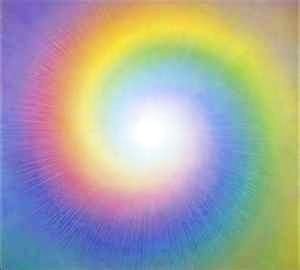Mayan Tikal Calendar Round ends
玛雅蒂卡尔日历循环结束
The 2012 end-date is based on the “end-point” or the date of 13.0.0.0.0 in the Maya Long Count Calendar. This is a completely different calendar from the 52-year Calendar Round, and there was a lot of variation across the lands inhabited by the Maya and Aztecs as to when the Calendar Round re-started. John Major Jenkins gives several of the variations in his book ‘Tzolkin’. There is only one known variation that re-starts in 2012, and that is the ‘Tikal’ version, which re-starts not in December 2012, but on April 2nd 2012.
2012末日预言是基于“完结点”也就是玛雅长历中13000年的结束日期。这跟52年为周期的短历大不相同。至于日历循环何时重新开始,玛雅人和阿兹特克人的居住地中有各种不同的说法。著名的独立研究人约翰•梅杰•詹金斯在著作“卓尔金历日”中给了好几种说法。世人只知道的版本是历法在2012年重新开始,也就是“蒂卡尔”日历。它不是在2012年12月21日重新开始,而是在2012年4月2日开始。
Aztec called the PleiadesTianquiztli, which means the “gathering place,” and was considered an important sign of the continuation of life: on midnight every 52 years it appeared directly overhead and assured the ancient Americans that the world would not come to an end. The Aztecs perform a special religious ceremony called the Dance of the New Fire (or Ceremony of the New Fire) once every 52 years to ensure the movement of the cosmos and the rebirth of the sun. This 52 year time period also corresponds to the 260-day religious calendar (Tonalpohualli in Aztec, or Tolkin in Mayan) when it interlocks with the 365-day civil calendar (Xiupohualli in Aztec or Haab in Mayan). Every 52 Haab solar years (73 Tolkin years) these calendars coincide. This was sometimes called by the Aztecs the Calendar Round. The 52 year cycle was said to begin when the Pleiades crossed the fifth cardinal point or the zenith of heaven at midnight. Sometimes not only is the Pleiades in its zenith over Mesoamerica, but this alignment also comes into a full conjunction with the sun (as we will see again in the 21st Century). In addition, two 52 year cycles (104 years) coordinate with a further alignment with Venus (symbolic of the female creative form on a local scale).
阿兹特克人称昴宿星团为“Tianquiztli”,意思是“聚集的地方”。他们认为那里是生命延续的一个重要指标。每隔52年的子夜时分,它就会直接出现在头顶上方,让古印第安人确信世界不会终结。阿兹特克人会每隔52年举办一个特殊的宗教仪式,名叫“新火之舞”(或者“新火仪式”),好确保太阳重生以及宇宙运行。当为期52年的循环与365天的阳历(阿兹特克人称为“修朴华力历”)连动的时候,它也会与260天的宗教历(阿兹特克人称为“托纳尔波瓦利历”,而玛雅人称为“托尔金历”)相对应。每52哈布阳历(73托尔金历年)这些历法的日期会重迭。阿兹特克人有时候称这种情况为阳历循环。一般认为52年循环周期开始于昴宿星团穿过第5个方位基点或是午夜天空的至高点。有时候不仅是中美洲上空的昴宿星团在最高点,而且这种对齐也会跟太阳出现全合相(正如我们将在21世纪再看到的那样)。另外,两次52年周期(104年)会连动到之后的金星星相(象征地球女性的创造力量)。
原文:http://2012portal.blogspot.com/2012/04/mayan-tikal-calendar-round-ends-april-2.html



